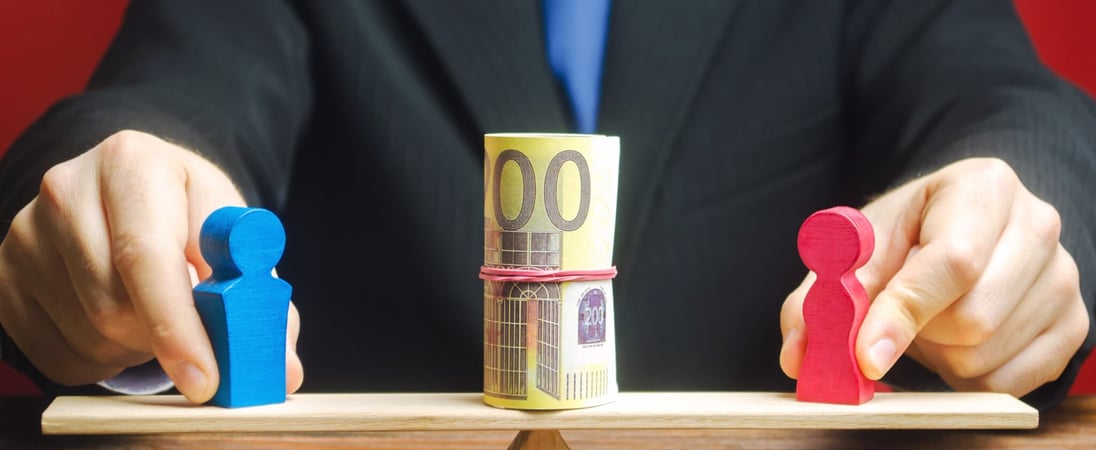
National Equal Pay Day
Despite many gains and improvement, women around the world receive significantly less pay than their male counterparts. Learn about why and how to change it.
Everyone knows that it’s the 21st century! Now isn’t it time that modern humans finally set this ‘women aren’t paid equally’ nonsense behind them and just give equal pay for equal work? That’s what National Equal Pay Day is all about.
Throughout the last century, there has been an ongoing and active fight to solve a problem that has existed far longer than that.
Women have, ever since history and work began, been paid lower wages for doing the exact same job. And the gap gets even wider when women of color are considered in comparison to white men.
National Equal Pay Day encourages people to get out there and fight for true employment equality for everyone, no matter their gender or the color of their skin! Isn’t it time people were paid what they are worth?
How to Observe National Equal Pay Day
Get involved in this important day and help raise awareness about pay equity. One of the best ways to observe this day is by opening up conversations about the problems within this arena.
Whether at work, in the neighborhood or in an academic environment, it is important that men and women alike become more educated about this severe problem in society.
This is also a great day to tell a friend, join in a rally, or make a donation to help with the cause.
Learn About Pay Equity
Part of the solution to this issue is to get more people informed. To do this, it is important to have some facts and figures at hand so that people can understand exactly what is going on in the salary arena of workplaces.
While statistics can vary from country to country, here are some interesting bits of information that may help to encourage education and conversation around the topic:
-
Overall, a woman earns only 82 cents for every dollar that a man earns. And the gap widens with women of color. In fact, it is estimated that a Latina woman will earn only 55 cents for every dollar that a white man earns, putting her equal pay day far back into the year, on October 21.
-
In 1973, the gender pay gap was much worse, when women only made 57 cents for every dollar that a man made. That means that progress has certainly been made in the last 50 years, but still more is needed!
-
National Equal Pay Day falls later in the year for mothers as well, as they would have to work until June 4 in order to make what fathers would make in the workplace.
-
Even highly educated women are affected by these wage differences. For instance, a black woman with an advanced degree earns only 70% of what a white man with advanced degrees earns. In fact, on average most women with advanced degrees (no matter their color) earn less than a white man with only a bachelor’s degree.
Take a Poll and Fight for Pay Equity
National Equal Pay Day is best celebrated by helping to raise awareness of the ongoing struggle women have with getting equal pay for equal work. Take a poll of a variety of contemporaries and find out what their wages are, and discover if they are getting paid equally for the same job.
If any imbalances are found that are clearly gender-related, take it to a union rep or employer and ask how this wage difference was determined and see about getting it remedied. Don’t do this alone if there are others that share the issue.
Make it a company-wide (or at least location-wide) activity to help overcome this injustice. National Equal Pay Day is an opportunity to have wage grievances heard. Now get out there and fight!
National Equal Pay Day FAQs
How did the red purse become a symbol of Equal Pay Day?
The red purse symbolizes women’s earnings “in the red” due to the wage gap.
Originating in Germany, activists chose red purses to highlight pay disparities. This visual cue emphasizes the financial shortfall women face compared to men.
Why does the date of Equal Pay Day vary across countries?
Equal Pay Day’s date reflects when women must work into the new year to match men’s previous year’s earnings.
This timing varies by country based on specific national wage gaps. For instance, in 2018, Germany observed it on March 19, while the U.S. marked it on April 10.
What role did Iceland play in advancing equal pay?
In 2018, Iceland became the first country to mandate equal pay by law. Companies with 25 or more employees must prove pay equity or face fines. This proactive approach aims to eliminate the gender pay gap.
How do cultural norms influence the gender pay gap?
Cultural expectations often steer women toward lower-paying jobs and prioritize family over career.
These norms contribute to occupational segregation and wage disparities. Addressing these cultural factors is crucial for achieving pay equity.
Are there misconceptions about the causes of the gender pay gap?
Yes, some believe the gap results solely from women’s choices, like career breaks for childcare.
However, studies show that even after accounting for such factors, a significant unexplained gap remains, suggesting systemic issues.
How do different countries celebrate Equal Pay Day?
Celebrations vary:
- In Germany, events and discussions focus on wage transparency.
- In the U.S., organizations host workshops and advocacy events.
- In Australia, campaigns highlight the economic benefits of closing the gap.
What impact does the gender pay gap have on retirement savings?
Lower lifetime earnings mean women accumulate less in pensions and savings, leading to financial insecurity in retirement. This disparity affects their quality of life in later years.
Is there a link between the gender pay gap and unpaid labor?
Yes, women often shoulder more unpaid household and caregiving duties, limiting their availability for paid work and career advancement, which contributes to the wage gap.
How does pay transparency influence the gender pay gap?
Pay transparency can reduce wage disparities by exposing inequities, prompting organizations to rectify unjustified differences. It encourages fair compensation practices.
What are some innovative strategies to close the gender pay gap?
Strategies include:
- Implementing pay audits.
- Enforcing equal pay legislation.
- Promoting women in leadership roles.
Encouraging shared parental leave to balance caregiving responsibilities.
History of National Equal Pay Day
Early in the 20th century, women around the world began taking a stand, but even though the battle has been going on for years, it still isn’t over.
In 1996, the National Committee on Pay Equity in the USA decided that it would be a great idea to promote a day dedicated to bringing awareness of the ongoing issue with the gender wage gap. One interesting fact about National Equal Pay Day is that its date changes not just year to year, but country to country.
National Equal Pay Day is set on the day in the year when a woman would have finally caught up with her male contemporaries’ wages from the previous year. As this varies each year, and in each country, they don’t always line up.
The pay gap is actually caused by a number of factors, but they are factors that are almost always directly related to the issues and choices for women that have been created by society.
One of the most prevalent factors in deciding who gets a job when two applicants are equally matched in all other aspects is gender, with men getting preferential treatment for positions when this comes up.
This is particularly true where the job in question is considered high pressure or high risk. All of this comes together to result in women earning just 82% as much as men in the same position.
This means that, on average, a woman has to work until March 24 of the following year to receive the amount of pay that her male counterpart earned in the previous year.
If this were merely an American problem, it would still be worth addressing. More concerning, however, is the fact that this issue exists in many of what are considered first-world countries, including Germany, Austria, the United Kingdom, Australia, and Singapore.
All over the world, the unequal treatment of men to women is a serious problem. Strides have been made in recent years but there is still very far to go.
It’s time to get involved and make companies aware of the need for equality in pay!
See what else is happening…
There’s always more going on every month at Days Of The Year. Here are our favorites this month!
Also on ...
View all holidaysInternational Waffle Day
Start your day off right with a warm and crispy breakfast treat topped with your favorite fruits, syrups, and whipped cream.
Tolkien Reading Day
Take a journey through a magical world filled with brave heroes, fierce battles, and unforgettable adventures in a beloved classic series.
We think you may also like...
National Accounts Payable Day
These finance wizards ensure the bills are paid and the numbers match. They're the financial glue keeping things smooth.
National Woman Astronomers Day
Unveiling cosmic mysteries, fearless minds navigate celestial realms, revealing the profound contributions of women in astronomy.








